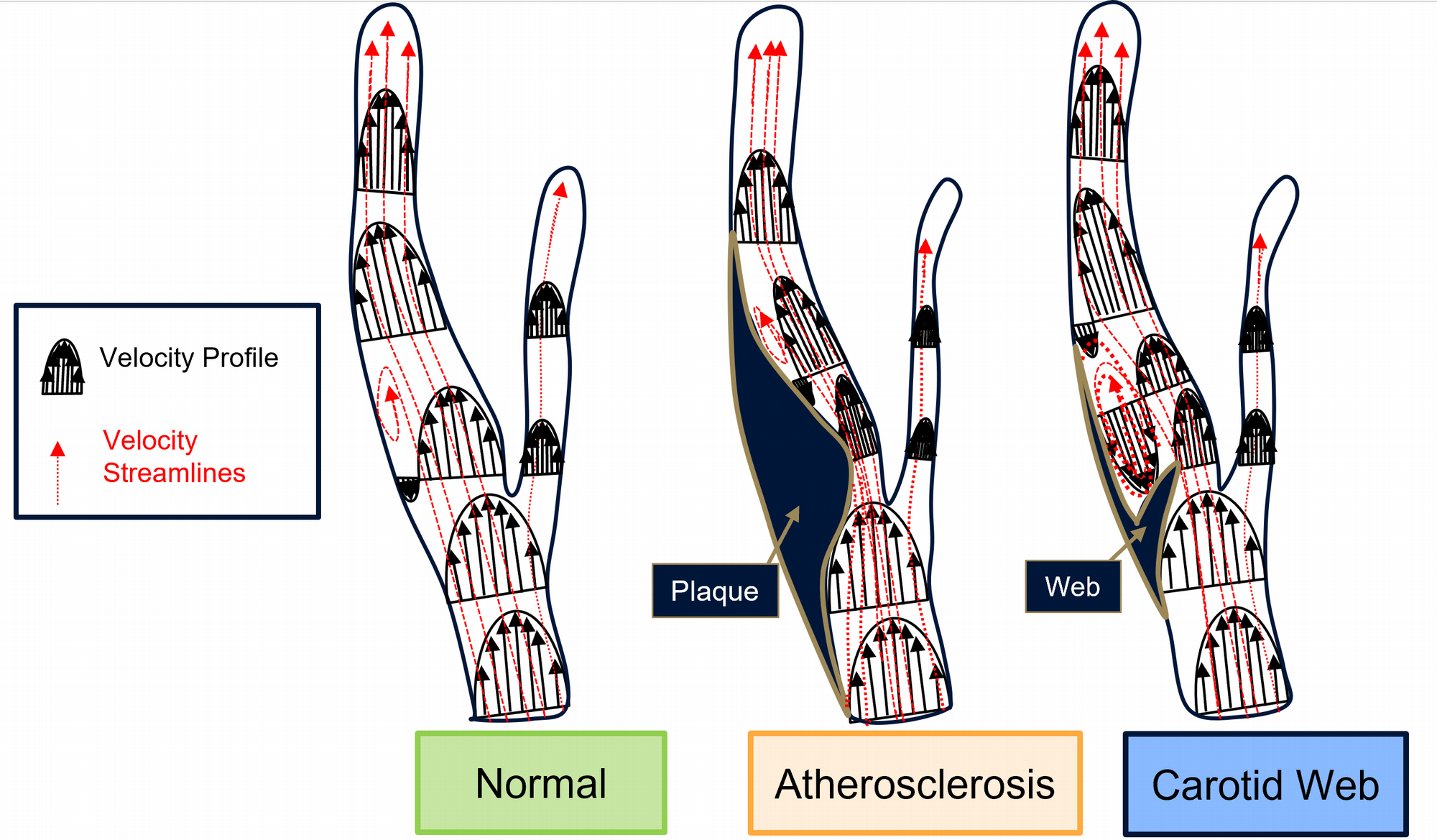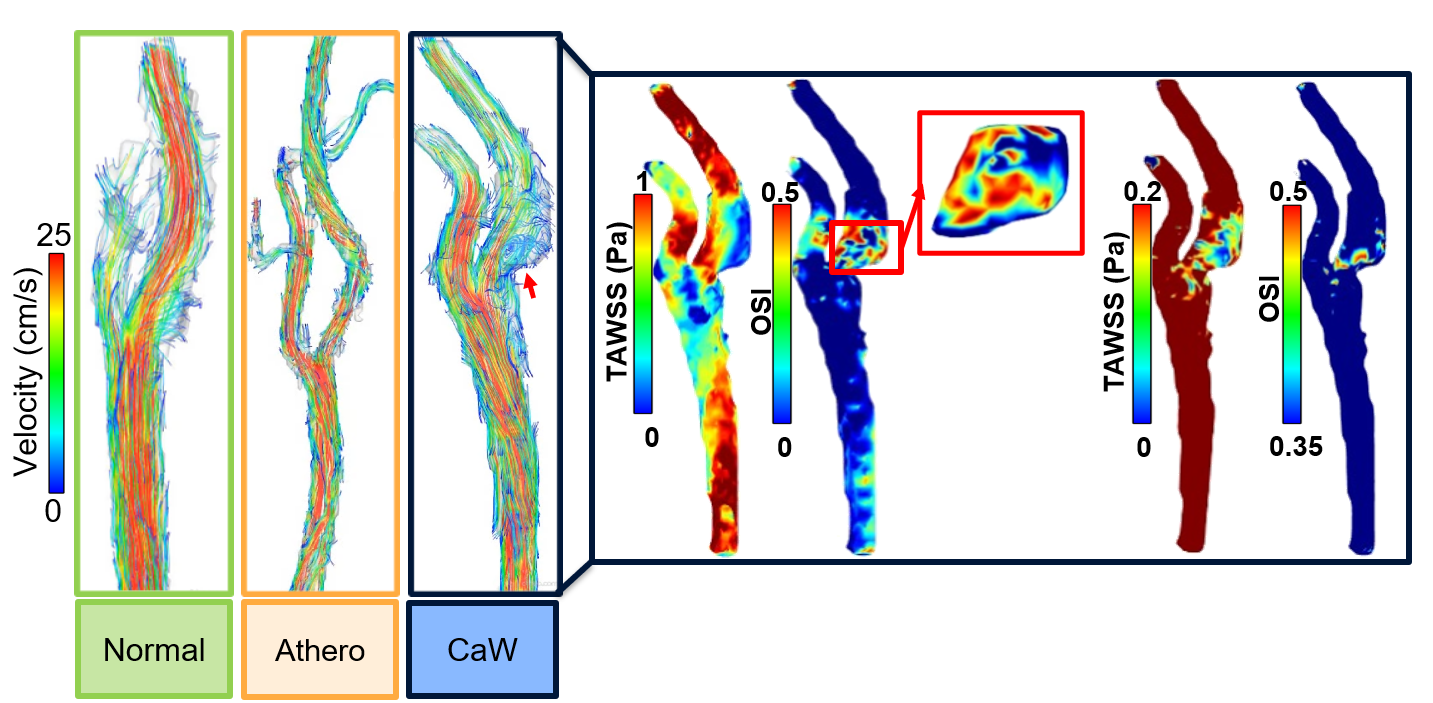Award-Winning Research
El Sayed devoted her doctoral program in biomedical engineering to assessing complex blood flow patterns in patients with carotid web. “From the outset, my objective was to conduct a comprehensive study comparing patients with carotid web to those with atherosclerosis and normal volunteers to assess the link between carotid web and stroke risk.”
She quickly homed in on 4D flow magnetic resonance imaging (MRI) because it non-invasively measures blood flow patterns in arteries. Sounds easy, but the high-tech scanner doesn’t come with pre-set sequences for imaging and assessing blood flow in small arteries like the carotid.
“Because there were no existing scanning parameters, we first had to estimate our scan parameters and then validate them through a phantom study to ensure the accuracy and reliability of our data collection methods,” El Sayed explains.
Emory: A Leader in Imaging Innovation
Emory is exactly the right place to do this work. Helming Emory’s Center for Systems Imaging, which is a leader in 4D flow MRI research, is John D. Oshinski, professor of radiology and imaging sciences and biomedical engineering and a leader in using MRI to study vascular hemodynamics. Oshinski is El Sayed’s mentor and co-advisor, along with Jason Allen, a neuroradiologist and expert in cryptogenic strokes, specifically carotid web. Allen directed Emory’s Division of Neuroradiology before becoming chair of the Department of Radiology and Imaging Sciences at Indiana University School of Medicine in late 2023.
For his outstanding mentoring of El Sayed and other young scientists, Oshinski is the recipient of the Emory School of Medicine's 20204 Mentoring Award.
Emory also has faculty teams in the Department of Neurology dedicated to treating patients with carotid web, a rare but potentially devastating condition. Both Diogo Haussen, associate professor of neurology, neurosurgery and radiology, and Fadi Nahab, assistant professor of neurology and pediatrics, recruited enough patients from their practice to ensure results would be statistically significant.





